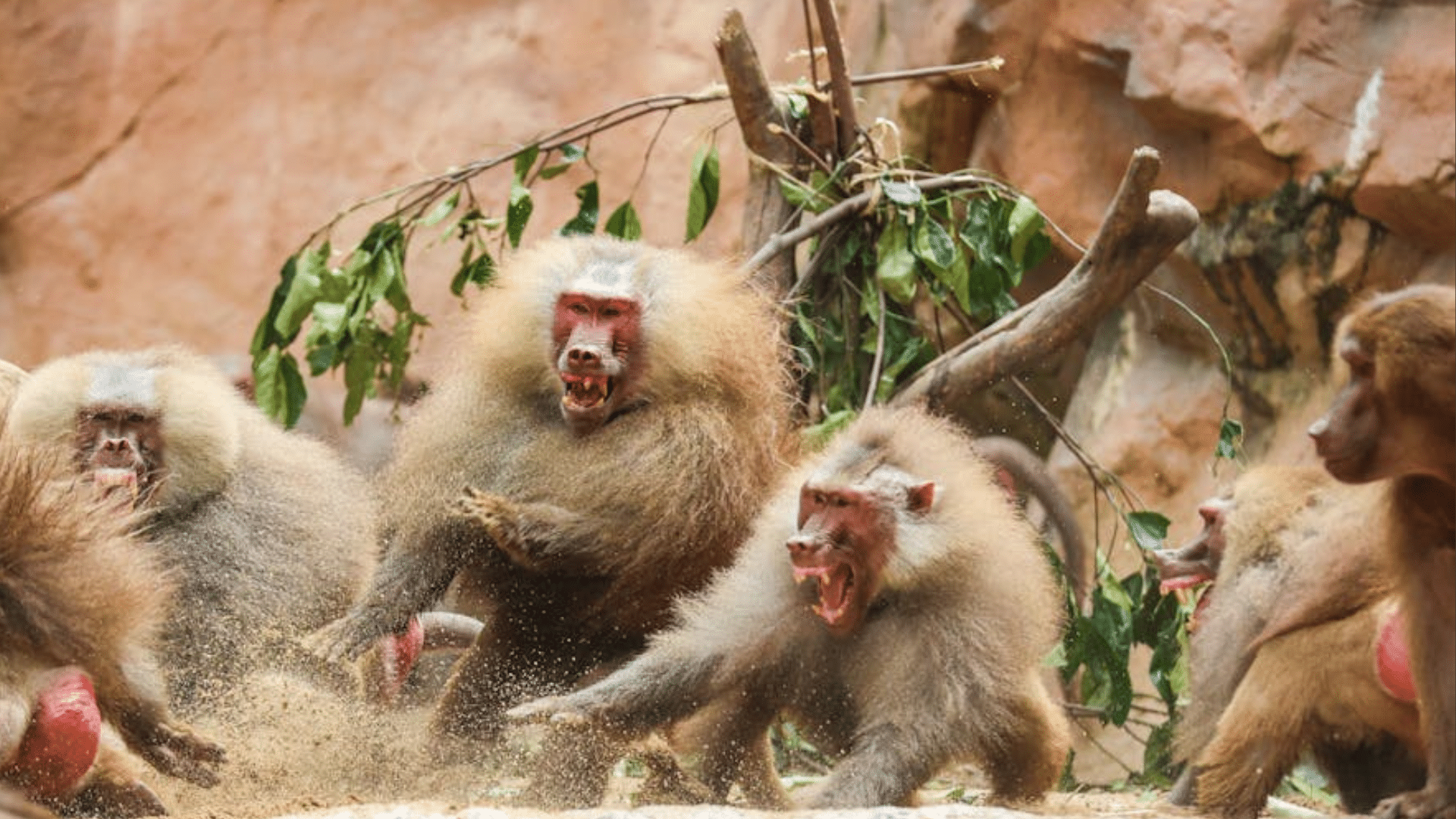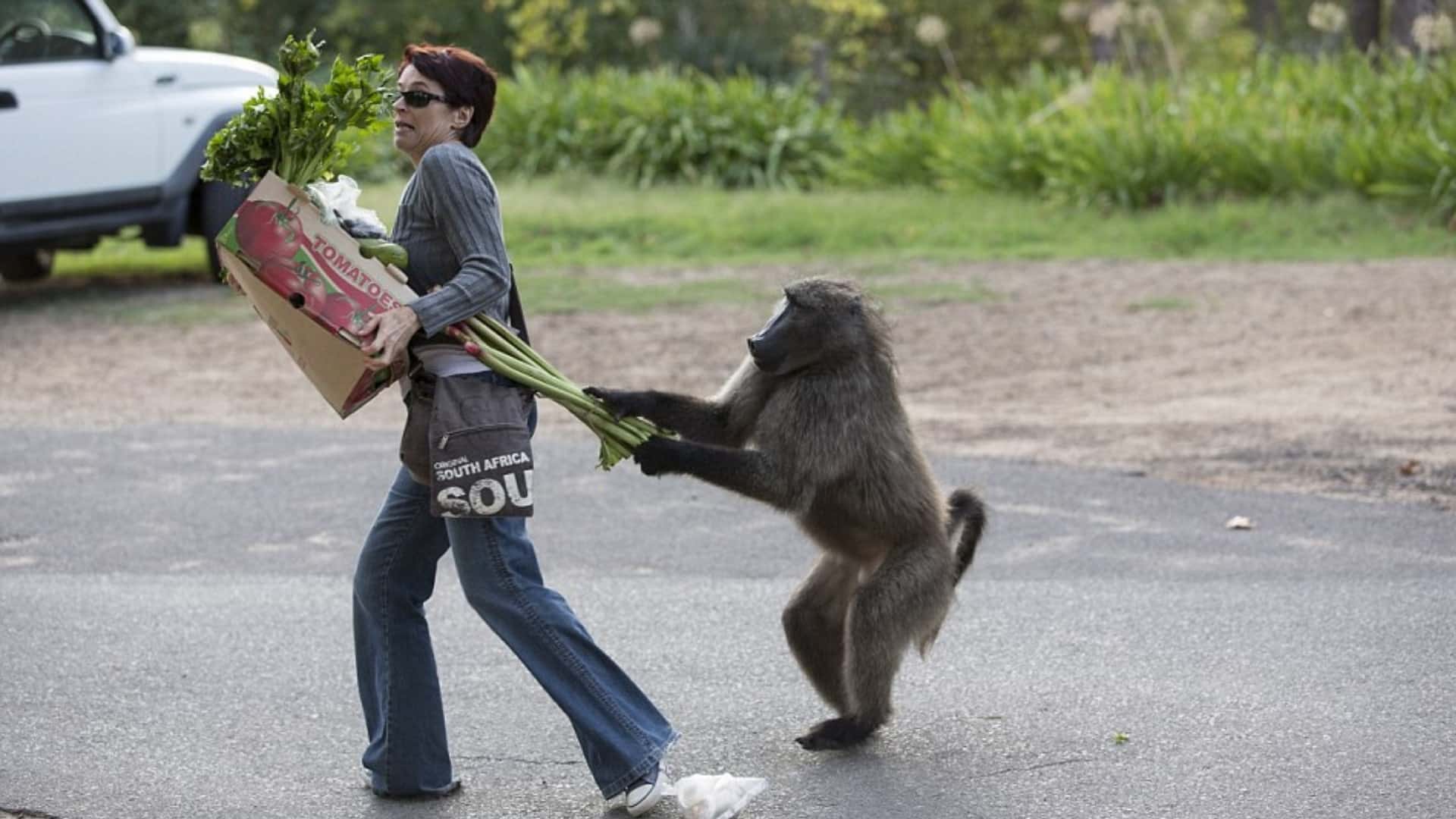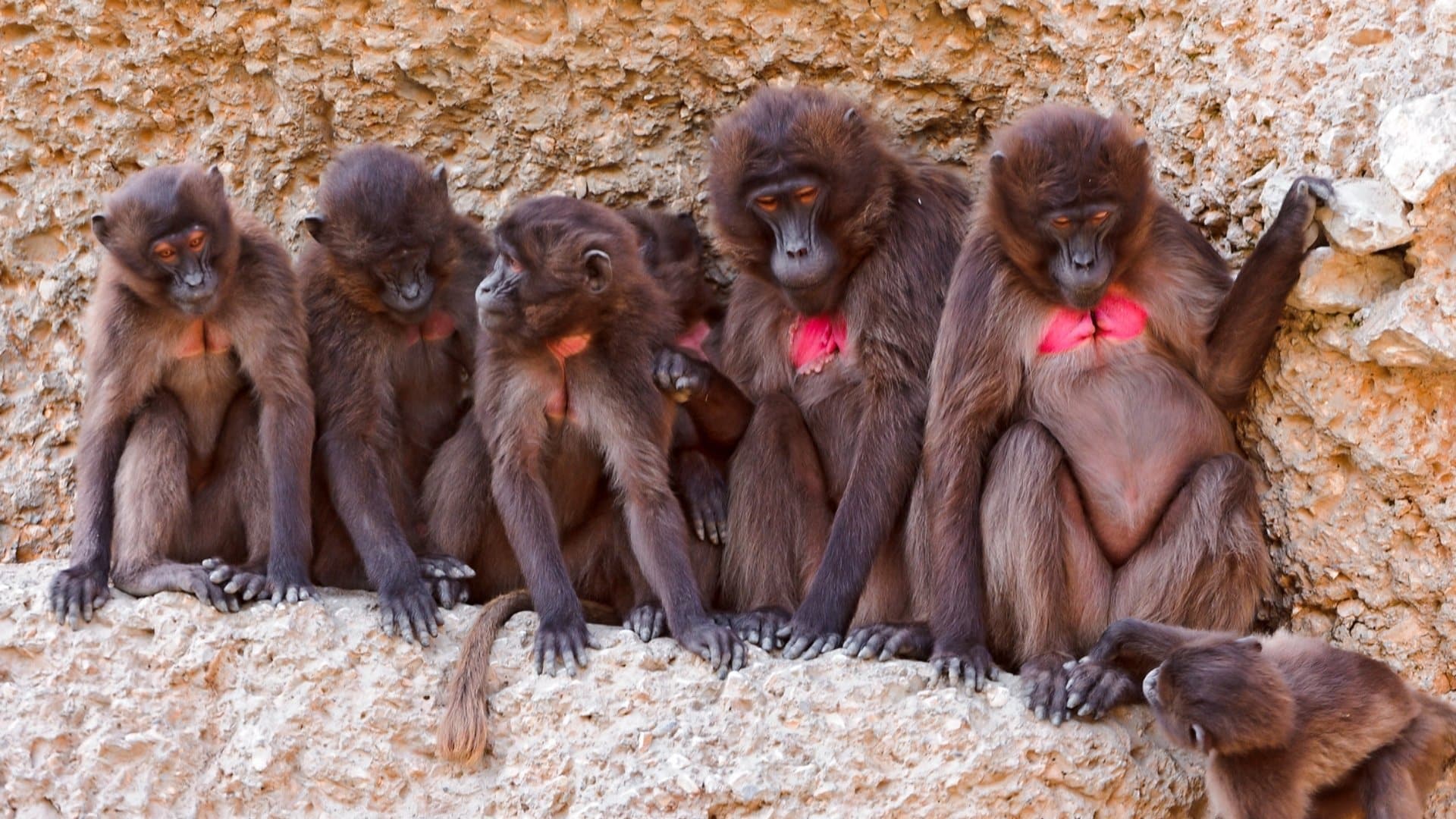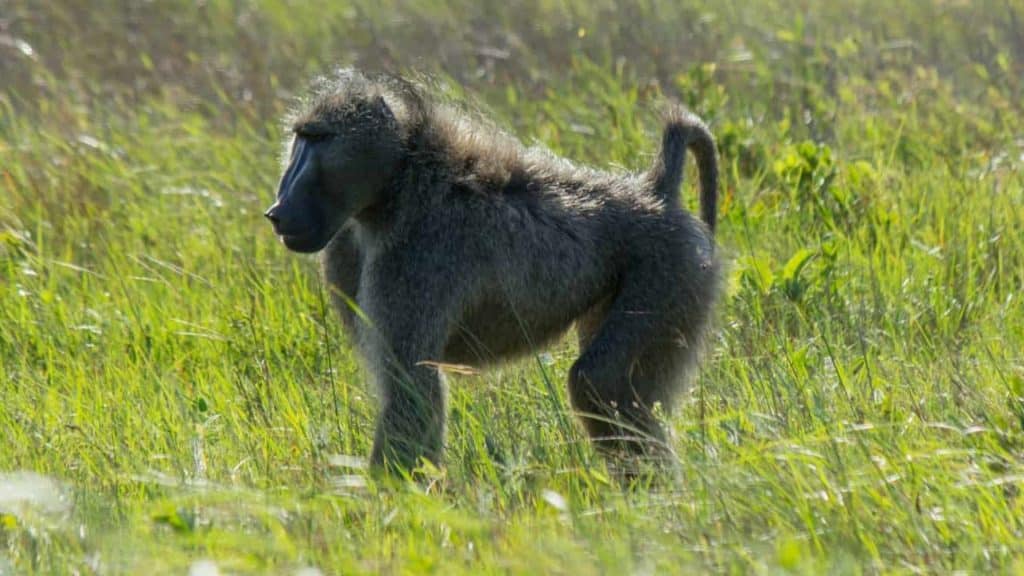Baboons are not the sidekicks you see in cartoons. They are wild, unpredictable, and full of surprises.
Their world is nothing like the stories you have heard before.
Imagine a creature that is clever enough to solve problems, bold enough to challenge humans, and social in ways that might shock you. That is a baboon for you.
If you think you know what makes an animal dangerous, get ready to rethink everything.
This is not just another wildlife tale. It offers a genuine glimpse into what happens when curiosity meets caution.
What are Baboons Like?
Baboons are large primates known for their strong bodies and sharp teeth.
They live in groups called troops, where each baboon has a role. These troops can be quite big, sometimes with more than a hundred members.
Baboons spend most of their time on the ground, but they are also skilled climbers.
There are five main species of baboons, each found in different parts of Africa and Arabia. These are the Chacma, Olive, Yellow, Guinea, and Hamadryas baboons.
Each species has its own look and lifestyle, from the desert-dwelling hamadryas with their long, silver manes to the olive baboons with their greenish coats.
These are some basic features of baboons:
- They have powerful jaws that help them eat a variety of foods
- Their faces are bare with close-set eyes and long snouts
- Baboons use loud calls and body movements to communicate
- They are very social and rely on grooming to build friendships
- Different species of baboons live in Africa and Arabia
Why Do Baboons Get Aggressive?

Baboons can surprise people with their sudden bursts of aggression. This behavior is deeply connected to how they live and survive. In their world, showing strength can mean the difference between safety and danger.
Their complex social lives and constant need to secure resources often lead to displays of power.
Aggression is not just about fighting. It is a way for baboons to communicate, set boundaries, and solve disputes without always resorting to violence.
Their actions are shaped by the environment, the group’s needs, and their own personalities.
Some Common Triggers for Aggression Include:
- Guarding young members of the troop from perceived threats
- Protecting access to water or food during tough times
- Asserting social rank, especially among adult males
- Reacting to sudden changes or unfamiliar animals nearby
How Dangerous are Baboons to Humans?

Baboons are not natural enemies of people, but their size and strength make them a risk in certain situations.
Most baboons avoid direct contact with humans unless they have learned that people provide easy access to food.
When baboons lose their fear of humans, they may become bold enough to enter homes, cars, or campsites.
Most injuries from baboons happen when people try to touch, feed, or scare them away. Their bites can be serious because of their powerful jaws and sharp teeth.
However, actual attacks are rare if you respect their space and do not offer food.
Different Baboons, Different Behaviors
Not all baboons act the same way. Each species has its own personality when it comes to dealing with challenges, strangers, and even people.
Some are more likely to stand their ground, while others prefer to avoid trouble.
| Species | Usual Reaction to Humans | Aggression Level Toward People | Special Behavior Note |
|---|---|---|---|
| Chacma | May approach if food is seen | High | Known for bold raids in towns |
| Olive | Watches from a distance | Moderate | Sometimes form large, curious groups |
| Yellow | Moves away quietly | Low to Moderate | Prefers open savanna, avoids people |
| Guinea | Retreats quickly | Low | Rarely aggressive, shy around humans |
| Hamadryas | Displays if threatened | Moderate | Males herd females and protect the group |
Baboons and People: Adaptation and Solutions
When baboons live near towns or farms, they often change their habits to find food more easily. Instead of relying only on wild plants and fruits, they may start eating crops, leftovers, or rubbish.
To address these challenges, communities use several practical strategies:
- Secure Waste and Food: Storing food properly and using strong bins keeps baboons from easy meals.
- Barriers: Fences, especially electric ones, can effectively protect gardens and fields if properly maintained.
- Guarding: Farmers and residents may watch over crops during times when baboons are most active.
- Education: Sharing information about not feeding baboons and safe food storage helps prevent attracting them.
- Working Together: Success comes when everyone in the community, residents, leaders, and wildlife experts, cooperate and respond quickly to issues.
By understanding how baboons adapt and utilizing these solutions, people and baboons can coexist more safely and peacefully.
Interesting Facts About Baboons

These are some unique and interesting facts about baboons that you may not know:
- They Use Over 30 Vocalizations: Baboons communicate with a rich variety of sounds, from barks and grunts to alarm calls, each with a specific meaning.
- Baboon Troops Can Number Over 200: Some troops, especially in savanna regions, can be massive social groups with complex hierarchies.
- Infant Baboons are often “Kidnapped.” Young baboons are sometimes carried off and cared for by other females in the troop, a behavior called “alloparenting.”
- They Practice “Grooming Diplomacy”: Grooming is not just for hygiene; it’s a social tool for building alliances and resolving conflicts within the group.
- Baboons can swim: While not common, some baboons have been observed swimming across rivers if needed, especially during floods.
- Their Cheek Pouches Store Food: Baboons have large cheek pouches that allow them to stash food and eat it later, helping them avoid competition.
- They Have Color Vision: Unlike many mammals, baboons can see a range of colors, which helps them find ripe fruits and spot predators.
- Baboons Can Live Over 40 Years: In captivity, baboons have reached ages of 45 years or more, much longer than in the wild.
Conclusion
Living near baboons can be tricky, but they also teach us important lessons. These smart animals often approach homes in search of food or shelter.
If people stay alert, keep trash covered, and don’t feed wild animals, many issues can be avoided.
As you learn more about how baboons live, you can better protect their homes and their natural habitats.
By working together, we can help protect nature and keep baboons as part of our world for many years to come.
Frequently Asked Questions
Do Baboons Use Specific Sounds When Aggressive?
Yes, baboons have special alarm calls and barks that signal aggression or warn the group of danger. These sounds are different from their everyday chatter.
Is There a Difference in Aggression Between Day and Night?
Baboons are more likely to show aggressive behavior during the day, especially in the morning when the troop is active and searching for food.
Can Weather or Seasons Affect a Baboon’s Aggression?
Absolutely. During dry seasons or droughts, when food and water are scarce, baboons may become more aggressive as competition for resources increases.















